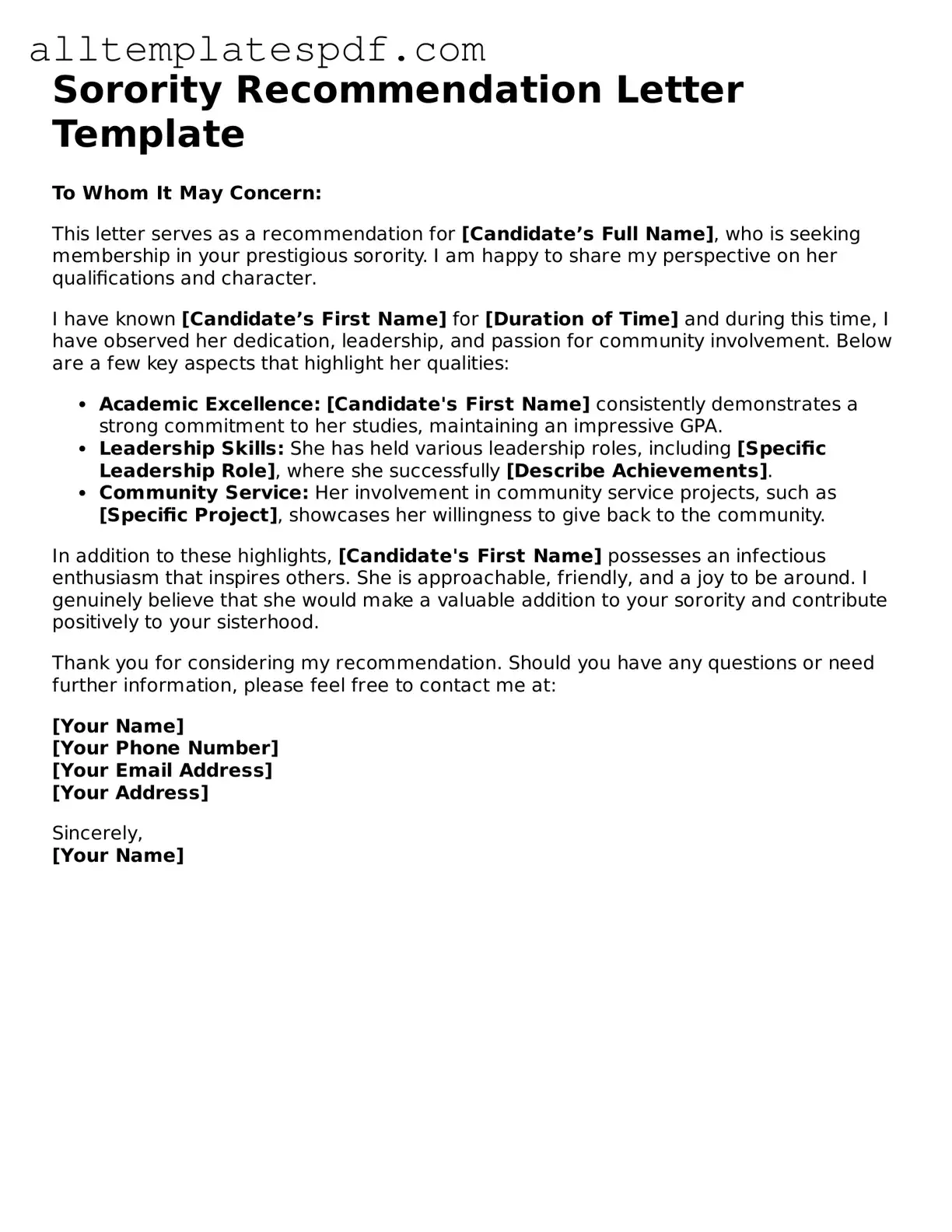Filling out a Sorority Recommendation Letter form can be a crucial step in the sorority recruitment process. However, many people make common mistakes that can hinder their chances of receiving a positive recommendation. Understanding these pitfalls can help ensure a smoother application experience.
One frequent mistake is providing incomplete information. Every section of the form is important. Omitting details, such as contact information or academic achievements, can lead to confusion or a lack of support from the recommender. Always double-check that all fields are filled out completely.
Another common error is using vague language. Specific examples of the candidate's accomplishments and character traits are essential. Instead of saying someone is “nice,” it’s more effective to describe a specific instance where they demonstrated kindness or leadership. This adds depth to the recommendation.
Some people fail to follow the required format. Each sorority may have specific guidelines for how the recommendation should be structured. Ignoring these guidelines can result in the form being disregarded. Always review the requirements before submission.
Neglecting to proofread is also a major mistake. Spelling and grammatical errors can detract from the professionalism of the recommendation. Taking the time to review the document can make a significant difference in how it is perceived.
Another issue arises when the recommender does not know the candidate well enough. A recommendation should come from someone who can speak to the candidate's strengths and personality. If the recommender is not familiar with the candidate, the recommendation may lack authenticity.
Some individuals forget to include a personal touch. A recommendation letter should reflect the unique qualities of the candidate. Including anecdotes or personal stories can make the recommendation more memorable and impactful.
Additionally, timing can be a critical factor. Submitting the recommendation too late can result in missed opportunities. It’s important to be aware of deadlines and plan ahead to ensure that everything is submitted on time.
Lastly, not following up can be detrimental. After submitting the recommendation, it’s a good practice to check in with the sorority or the recommender. This shows initiative and reinforces the candidate's interest in the sorority.
